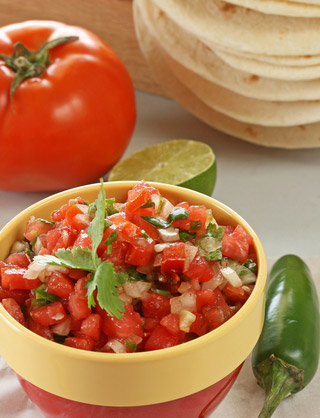Recipe: Roasted Vegetable Salsa
Roasting, a quick and easy process, amplifies the natural sweetness in vegetables and takes salsa to new levels. Dry heat at high temperatures draws water out of the vegetables and concentrates the natural sugars for robust, full-bodied flavors. For even roasting, cut the vegetables to about the same size — the smaller the cut, the […]

Roasting, a quick and easy process, amplifies the natural sweetness in vegetables and takes salsa to new levels. Dry heat at high temperatures draws water out of the vegetables and concentrates the natural sugars for robust, full-bodied flavors.
For even roasting, cut the vegetables to about the same size — the smaller the cut, the shorter the cooking time. Arrange like vegetables together in a single layer in a pan to achieve a crisp, lightly caramelized exterior and a soft interior. Once the vegetables are cooked to your liking, stir them together for a new twist on the French classic, ratatouille.
Roast an extra batch and feel free to experiment with your favorite vegetables. The vegetables are twice as good the next day, after the flavors have had time to blend — just don’t call them leftovers. Use them as a dip with herbed pita bread, alongside chicken or fish, or as a relish in your favorite sandwich. Refrigerate that second batch of roasted vegetables in an airtight container for up to three days or freeze it for up to one month. Whether you make it a dip or dinner, think of this recipe as the start of something good.
Your imagination is the only limit to the uses for this Roasted Vegetable Salsa, but here are a few my family enjoys.
Use in omelets with fresh goat cheese.
Sprinkle salsa and shredded Monterey Jack cheese on flour tortillas; top each with a second tortilla. Cook quesadillas in a lightly greased saute pan 2 minutes per side or until cheese melts.
Add to 8 ounces of hot cooked pasta; add freshly grated Parmesan cheese and toss gently.
RECIPES


